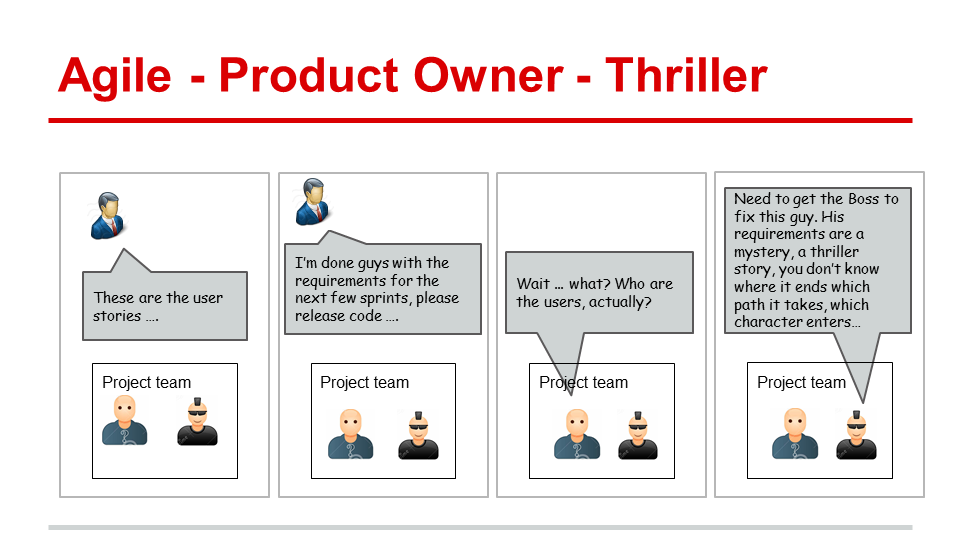
Intro
Ah, the world of Agile! A place where rapid responses, dynamic changes, and collaboration reign supreme. Enter the Product Owner, the guardian of requirements, the bridge between the client’s vision and the team’s execution. But sometimes, these requirements can take on a life of their own, turning routine sprints into epic sagas. Dive in and see the lighter side of navigating the Agile seas!
The Comic
Context
A product owner steps forward, clutching a sheaf of user stories. The team gathers around, eager to dive into the new requirements they’re about to receive.
Meet the Characters
(read more about the following characters here)
Diggz – The witty sidekick of the Boss!
Waggz – The epitome of the “Yes Boss” mantra!
Product Owner – Providing User Stories to the Team
The Cartoon
<< From “Cirque du Biz”, A sridvana’s Comic Strip Conceived in 2015 >> — Excuse me for the PPT visuals! I once dreamt of jazzing it up with a cartoonist’s flair and a dose of humorous dialogues. But here they are, shared in their untouched charm for your blog-reading pleasure!”

Product Owner – Confidently: “These are the user stories…”
Product Owner – With finality: “I’m done guys with the requirements for the next few sprints, please release code…”
Waggz – Completely baffled: “Wait … what? Who are the users actually?”
Diggz – Bewildered & Sarcastic: “Need to get the Boss to fix this guy. His requirements are a mystery, a thriller story. You don’t know where it ends, which path it takes, which character enters…”
Contrarian Views
When presenting humorous content, especially in a professional context like Agile or any other work methodology, it’s helpful to be aware of potential criticisms or differing perspectives. Here are some potential contrarian views regarding the joke:
- Misrepresentation: Some Agile practitioners might feel that the joke misrepresents the role of the Product Owner (PO). A proficient PO should provide clear and comprehensive requirements, ensuring that the development team understands the user stories.
- Team Dynamics: The joke might be perceived as perpetuating a stereotype that the Product Owner and the development team are often at odds. In actual Agile practices, collaboration and clear communication between the PO and the team are emphasized.
- Over-Simplification: Agile methodologies encompass a wide range of practices, rituals, and tools to ensure clarity in requirements. The joke might seem to oversimplify these practices, implying that misunderstandings are a common occurrence.
- Inclusion: While the joke focuses on the PO’s ambiguity, it could be argued that the onus is also on the development team to seek clarification when they are uncertain. The depiction might appear one-sided to some.
- Demeaning Professionalism: Some might feel that the portrayal of the Product Owner as delivering unclear requirements and the team’s response demeans the professionalism inherent in Agile practices.
MidJourney Prompt with inputs from ChatGPT
Create a humorous, cartoonish scene set in a modern office environment. There are four characters: Product Owner: Wearing a tie and glasses, confidently holding up a paper titled “User Stories”. He looks professional and a tad smug. Waggz: A team member with a puzzled expression. His hands are thrown up in the air in confusion, and there are question marks around his head. Diggz: Another team member, scratching his head with one hand and holding a laptop in the other. His expression is one of total bewilderment. Background Characters: A few team members around, looking from the Product Owner to Waggz and Diggz, sharing in the confusion. The background should depict an office setting, with a whiteboard, some charts, and scattered papers. The overall tone is light and fun, highlighting the comedic chaos of the situation. –ar 16:9

